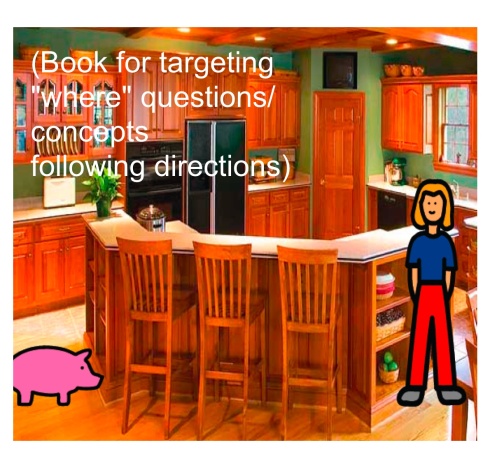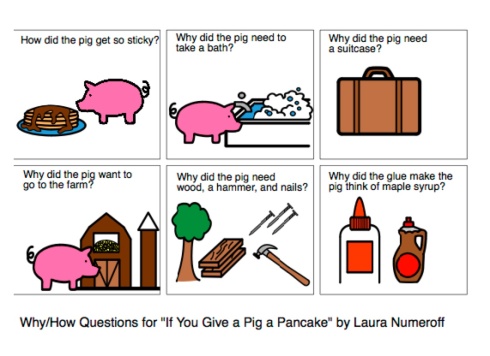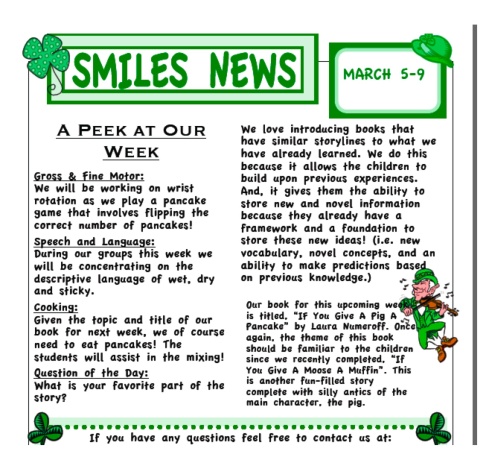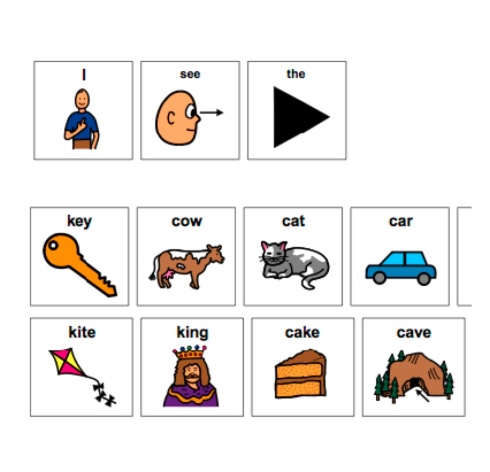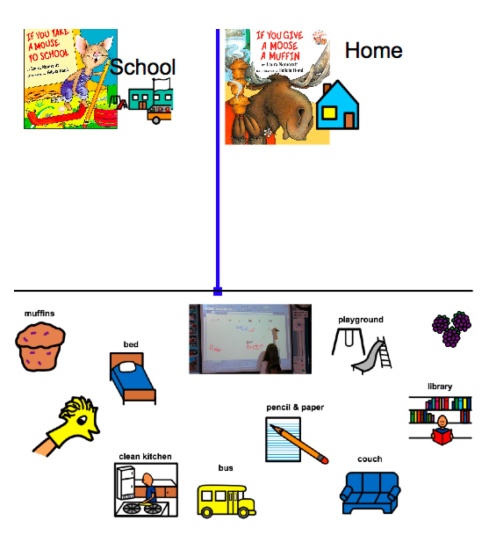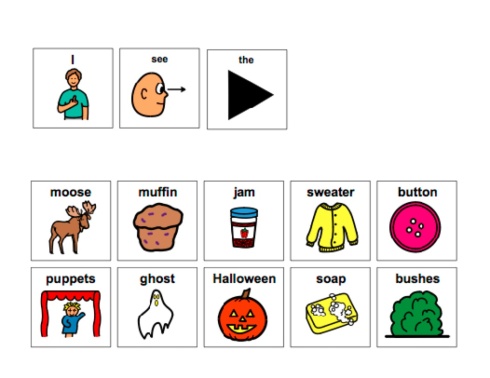This week’s book: If You Give a Mouse a Cookie. There are a lot of materials and ideas out there, but wanted to share a few that our program made this week/some tools we loved having for our hour-long speech/motor/social work group. Click above for the SMARTBoard activity my co-worker Kristin and I made. We put a little more effort into this one—hope you enjoy! Focuses on vocabulary from the book and following directions (can make as simple/challenging as you want). Click above also for a sequencing visual (helpful for preK kids starting to retell stories/working on slow, smooth speech/artic targets during less structured tasks). Here are the visuals from the story (part I, part II).
Some photos from our large group activities are below. We read the story and then split into three groups. One group went with our social worker and used the Toca Tea Party App. Another worked with our occupational therapist, rolling out play doh and using cookie cutters. My group used the Cookie Maker app, which is free! I’d highly recommend it. Awesome for following directions and sequencing. The visuals are great—can really see the dough getting mixed and flattening as you roll it, etc. There’s a donut version that looks even better/more complicated (to use with If You Give a Dog a Donut?). Once the kids had all been through each station, we had snack. Was it a healthy snack? Um, no. They each got an oreo cookie and a chocolate chip one…and then—after a taste test—got to pick one more of whichever was their favorite (hey, calories for the sake of answering wh- questions ;-D). After snack we played “Who Stole the Cookie From the Cookie Jar” (always a favorite, no matter what version…chicken nugget from the Happy Meal, syrup from the pancake stack…).
I love all the Laura Numeroff/Felicia Bond books, but the original does the cause-effect relationship the best! Great story for preK.










